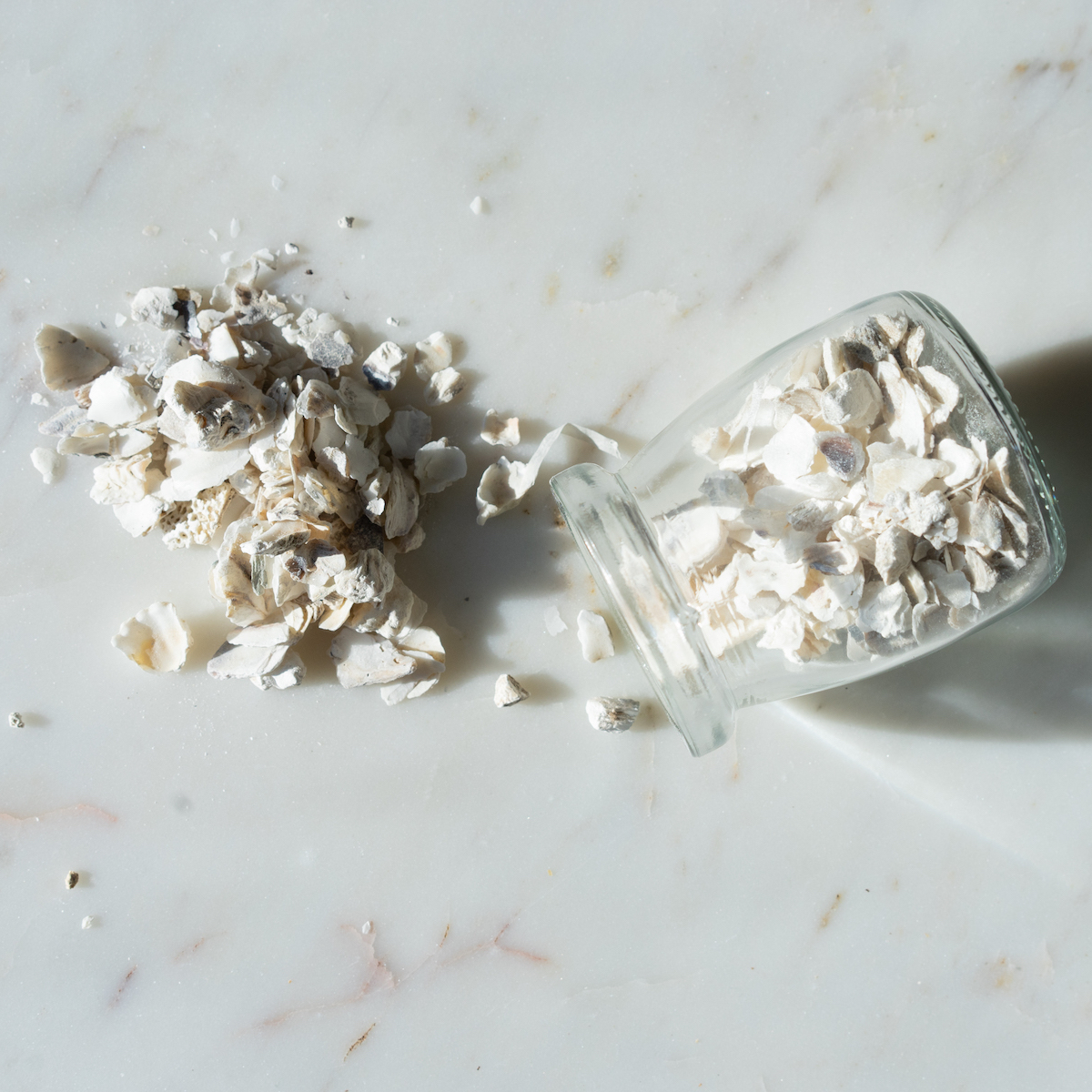
COMMON NAME (Chinese Name)
Oyster Shell (Mu Li)
BOTANICAL NAME
Ostrea
USES
Oyster shell refers to the inner and outer surface of an Ostrea (Ostrea edulis) used in traditional Chinese medicine. The oyster shell is highly rich in calcium and zinc and also contains many other vitamins and minerals. Lead levels can also be significant depending upon where the shell is sourced, so ask your vendor what tests have been done.
Oyster shells are used for a wide variety of reasons including their hepatoprotective role, mood boost abilities, reduction in the risk of gastric ulcers, and boosting of the immune response against infectious agents such as a virus. Studies have also reported that it softens hard masses, regulates sleep, improves blood pressure, induces sedation, and prevents the risk of fluid discharge and nodules formation.
Medical studies have reported that a diet fortified with oyster shell can treat and reduce the risk of osteoporosis and support the optimal health of bones. Animal studies have shown that the intake of oyster shell improves mineralization such as calcium and phosphorous. Also, it improves the total protein level and encourages the weight of the tibias.
Studies on Oyster shell reported document anti-inflammatory activity via inhibiting the production of proinflammatory mediators. Thus, the oyster shell may treat and reduce the risk of chronic inflammatory medical conditions. It also shows antioxidant activity by decreasing the generation of free radicals and increasing the action of natural antioxidant agents in the body. Thus, it may help to protect cellular integrity, support vitality, and suppress inflammation. Moreover, an animal study showed that oyster shell boosts the level of testosterone hormone via acting as aromatase blocker.
Medical research studies reported anticancer activity of oyster shells. It prevents the risk of oral cancer by suppressing carcinogenesis and proliferation and improves epithelium differentiation in the oral cavity.
Mu Li is classified as an herb that calms the Shen and anchors the spirit. The shell is classified as cool, salty and astringent.
PREPARATION & ADMINISTRATION
Well-sourced oyster shell is grounded to a powder form intended for oral administration. The powder is either available for the formulation of other herbal products or to prepare pills (capsule and tablet) or decoction formulation for oral usage. The shells of oysters are collected, cleaned, sterilized, and subjected to crushing to get fine powder for different formulations. Typically, a dose of 15 – 30 grams is used for treating various health ailments. Also, Oyster shell is used in combination with other herbs like, fossilized cow bone “dragon bone” (Long gu), fritillary bulbs (Chuan Bei Mu), bupleurum roots (Chai Hu), red sage roots (Dan Shen), ningpo figwort roots (Xuan Shen), sargassum (Hai Zao), and kombu (Kun Bu) and heal-all spikes (Xia Ku Cao) in different formulations.
PRECAUTIONS
Oyster shell formulas should not be used in case of severe medical conditions or known hypersensitivity to it or shellfish. Also, don’t exceed the recommended dose as it may result in gastrointestinal complications. You should consult with a certified herbalist, physician or other qualified healthcare professional before taking oyster shell.
Contact the doctor immediately if you experience nausea, loss of appetite, vomiting, headache, mood change, increased urination, unusual weight loss, weakness, or long-term thirst with the consumption of Oyster shell. Properly consult with a doctor before taking it during pregnancy or lactation.
REFERENCES
China Pharmacopoeia Committee. Chinese Pharmacopoeia (I). Beijing, China: China Medical Science Press;2010:161-162.
Shao, Jiang-Juan et al. Zhong yao cai = Zhongyaocai = Journal of Chinese medicinal materials vol. 36,9 (2013): 1395-7.

Comments (0)